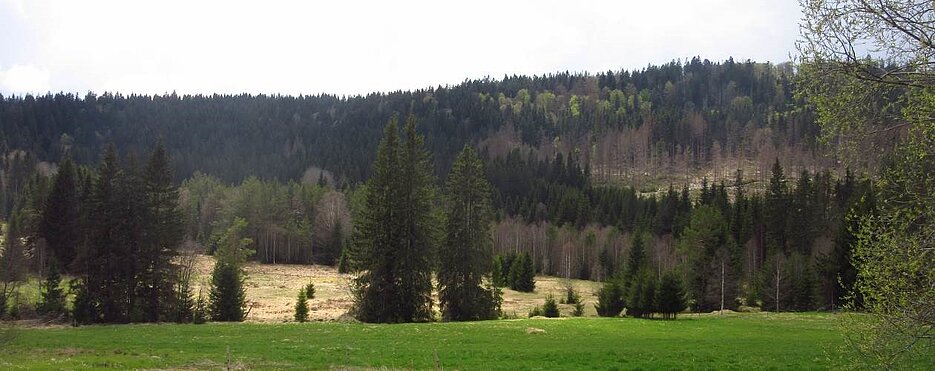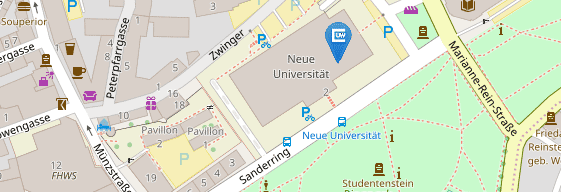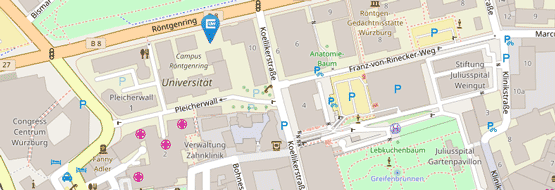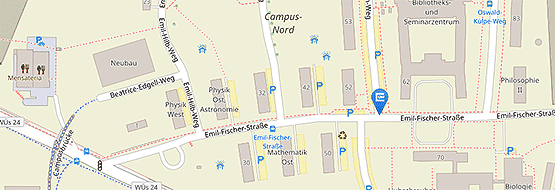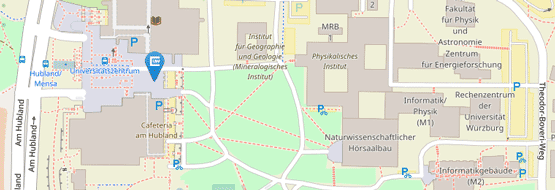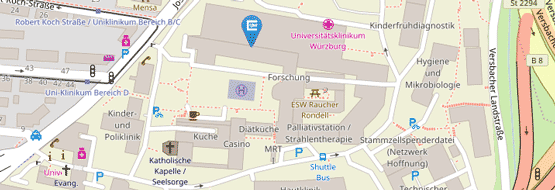New review on forest management systems and their effects on biodiversity
08/23/2024Forest management undoubtedly has an effect on forest structure and biodiversity. Yet, the Black-and-White picture that often is drawn and concludes that uneven-aged single tree selection should be preferred over even-aged regular management, could not be confirmed by a recent study from Dr. Britta Uhl and her colleagues, which was published in August 2024 in “Biodiversity and Conservation”.
This stigmatic view, indeed, is a result of oversimplification and the wrong use of forestry terms in studies, an overly strong focus on alpha diversity measures, and the fact, that long rotation periods often are ignored.
How can we create biodiversity rich forest landscapes?
Almost 30% of Germany are covered by forests. In whole Europe, it’s even 34.8% of the terrestrial area. While only 0.7% of the European forests are considered as “undisturbed by man”, most other parts are shaped by human activities. While keeping and protecting undisturbed forests for biodiversity reasons is beyond question, we also have to think about ameliorating management practices in managed forests, so that we can keep all the important ecosystem functions and the diverse species communities that can be found within forests. Within their new study, Dr. Britta Uhl (Uni Würzburg), Dr. Peter Schall (University Göttingen), and Prof. Dr. Claus Bässler (University Bayreuth) reviewed the available literature on forest management to find out, how different management techniques shape biodiversity. The overarching goal was to find out, how biodiversity rich forest landscapes can be created and which forest management approach, therefore, is the best.
When people are asked how sustainable forest management should be done, they often refer to a minimal-intervention-approach, where only single trees are cut down, no clear-cuts are made and no big machines are used. In fact, this is also the goal of the so called “Close-to-nature” forest management approach, which long has been seen as the gold standard to keep multifunctional forests. But is this really the best solution?
The diversity-in-management-approach to create biodiversity rich forest landscapes
While single-tree-selection, in fact, is a good approach to create a continuous cover forest and to support the regeneration of shade tolerant trees, the promotion of only one management approach often leads to quite monotonous forests on the landscape scale. However, forest landscapes shouldn’t be monotonous but should represent all the different forest stages and types that also naturally would occur. And here comes the problem: People often expect forests to be stable and “clean”, so to consist of large grown, healthy trees, with no canopy gaps and no deadwood on the ground. Forest, however, are all but stable – they should be seen as dynamic systems, which change their structure over time and can appear in many forms.
Forests as dynamic systems
If no interventions are made, one could observe a cycle of natural establishment, growth, maturing, and decay of a forest (the so called Mosaik-Cycle-Concept). If forests are artificially kept in a stable “Optimal stage”, we lose all the species that are dependent on other forest structural types, like pioneer species preferring “Establishment stage” forests, or many deadwood species living in “Plenter” or “Terminal stage” forests. Therefore, a diversity-in-management-approach is needed, with different management systems creating different forest stages. A clearcut, which is one part of the so-called regular (or rotational), even-aged forest management, might at first look disastrous, but is one possibility to create “Gap stage” and “Establishment stage” forests. Though even-aged management systems do have a bad reputation when it comes to biodiversity conservation, these systems in fact can create high landscape heterogeneity, which leads to high regional gamma biodiversity.
Heterogeneity in forest landscapes: Key for high biodiversity
To create biodiversity rich forest landscapes, heterogeneity on different scales should be promoted. The first scale is the forest type scale, which mainly is predefined by the soil characteristics and the macroclimate. Some areas might be suitable for conifer forests, while other areas might provide the abiotic environment for deciduous forests like beech or oak forests. Depending on the forest type, there are different possibilities to implement management. Within beech forest, management techniques with continuous covers are to be preferred as beech trees best regenerate under closed canopies. For oak forests, in contrast, management techniques that create more light, like gap cutting systems, should be preferred as oak trees need more light for their regeneration.
The second scale is the forest stage scale: So, are we going to create an Establishment, an Optimum or a Plenter stage forest? Depending on the stage, again different management techniques can be useful. Gap and Establishment stages can be created by applying expanding-gap irregular shelterwood or regular even-aged systems. “Plenter stage” forests, on the other hand, can only be created by retention strategies or the protection of forest patches, as for these stages, overmature trees and deadwood have to be retained in the forest and not yielded. Interestingly, some traditional management practices, like coppice with standard management, can resemble “Terminal stage” forests, for which reason these traditional practices should also be kept.
The last scale to create heterogeneity is the local regeneration mode, thinning, retention and gap size (depending on the forest stage we’re looking at). An Optimum stage forest, as an example, can be managed with low thinning intensity (viz. only removing single trees) or with high thinning intensity (viz. higher percentage/share of trees or groups of trees are removed). The thinning level can be crucial when it comes to promoting co-occurring species with different needs for their regeneration. Also the gap size within a Gap stage forests can be defined by different levels from low intensity (viz. a small gap cut) to high intensity (viz. a larger clearcut).
Applying different management systems to promote different forest types, and achieve different forest stages and local structures/modes is the key for heterogeneous, biodiversity rich forest landscapes. However, the topic is quite complex. With their review, the authors give a brief overview over the different management systems, their effects on biodiversity at alpha-, beta-, and gamma level and provide a theoretical outlook how a diversity-in-management approach could look like. For more detailed information, the open access study can be found at:
https://link.springer.com/article/10.1007/s10531-024-02878-x


![[Translate to Englisch:] Schaumzikade an einer krautigen Pflanze](/fileadmin/_processed_/f/f/csm_Slider_2_Schaumzikade_d4619c9ebf.jpeg)
![[Translate to Englisch:] Versuchsaufbau mit Samenplatte und Käfig](/fileadmin/_processed_/3/c/csm_Slider_7_Samenplatte_ad189e1bec.jpeg)
![[Translate to Englisch:] Eine Spinne in ihrem Netz zwischen Kräutern](/fileadmin/_processed_/e/d/csm_Slider__-_1_095079c407.jpeg)
![[Translate to Englisch:] Herbstlicher Buchenwald mit Messinstrumenten](/fileadmin/_processed_/9/8/csm_Slider_6_Explos_Wald_Alb_d3e5e2583f.jpeg)
![[Translate to Englisch:] Eine sehr kleine Spinne an einer gelben Blüte](/fileadmin/_processed_/d/6/csm_Slider_4_Spinne_651e2ee496.jpeg)
